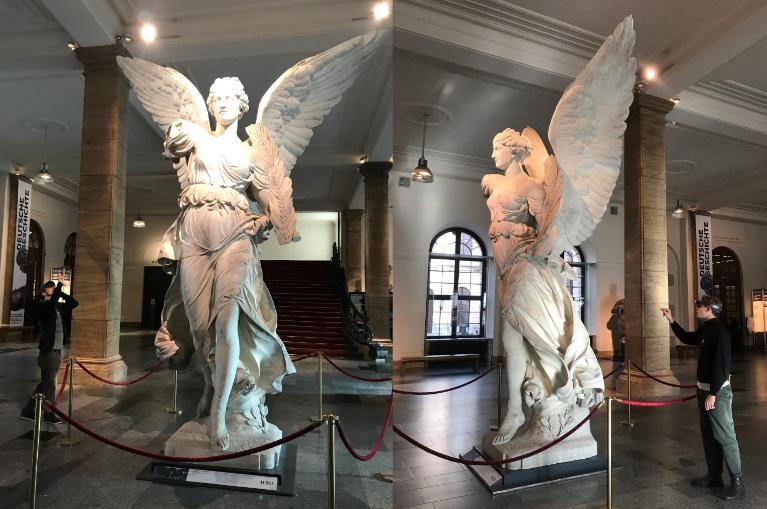Object-Centered Museum Mediation: Augmenting Viktoria
|
Digital technologies are increasingly being used in museum mediation, however, their effective use is still under research. While there is a growing interest in including digital media in museum mediation, two challenges are determined: (1) digital media has the potential to divert visitors’ attention from the museum exhibit, and (2) the employed technological and narrative approaches often reduce the visitors’ initiative. We address both of these challenges. First, we aim to direct the visitors’ gaze to the museum exhibit’s material presence and quality. Second, we explore three modes of guidance to understand whether and to what extent they influence user experience, particularly visitors’ learning experience. We implemented a Mixed Reality prototype as a way to enable museum visitors without prior knowledge of art history to discover the iconological meaning of an exhibit.
Our prototype offers interpretation for the sculpture ”Viktoria” (Fig 1) at the German Historical Museum in Berlin. This 3.90-m tall allegorical representation of the goddess of victory, completed in white marble by the German sculptor Fritz Schaper in 1885, opens up especially two lines of interpretation that are linked with the visual and material properties of the sculpture: the iconographic meaning of a number of attributes and the object’s biography and relation to German history. The prototype was developed in an interdisciplinary team of museum experts and HCI researchers and consequently integrated perspectives from art history, museum education, digital cultural mediation, and HCI. The intention behind the HoloLens-based prototype was to encourage visitors to closely examine the sculpture while supporting them in deciphering its meaning. Consequently, the design process was informed by two fundamental concepts within museum mediation: object-centered mediation and modes of guidance. We considered two questions for our design: (1) how can we balance the provided digital information in such a way that it emphasizes the ”presence” of the sculpture, and (2) how can we design different modes of ”guidance” for the experience.
The case study has relevance for museum practice, particularly for researchers and practitioners that want to explore digital technologies for mediation and interpretation in museums.
Project Website:https://augmenting-viktoria.de/
Funding:The case study was funded by EXC Bild Wissen Gestaltung and the Minister of State for Culture and the Media (BKM) as part of museum4punkt0
Partners:- Stiftung Preußischer Kulturbesitz (museum4punkt0)
- Deutsches Historisches Museum
The MR application is designed for non-expert museum visitors that are interested to learn more about the symbolical meaning of an artwork.
Literature & Media
- Glinka, K., Fischer, P. T., Müller-Birn, C., Krohn, S. (2020). "Investigating Modes of Activity and Guidance for Mediating Museum Exhibits in Mixed Reality". In: J.H. Israel / C. Kassung / J. Sieck (Eds.). Kultur und Informatik: Extended Reality. Berlin: vwh
- The source code and documentation for our prototype are published here: https://git.imp.fu-berlin.de/rsrealtime/mr-victoria/ This application is licensed under MIT License.

